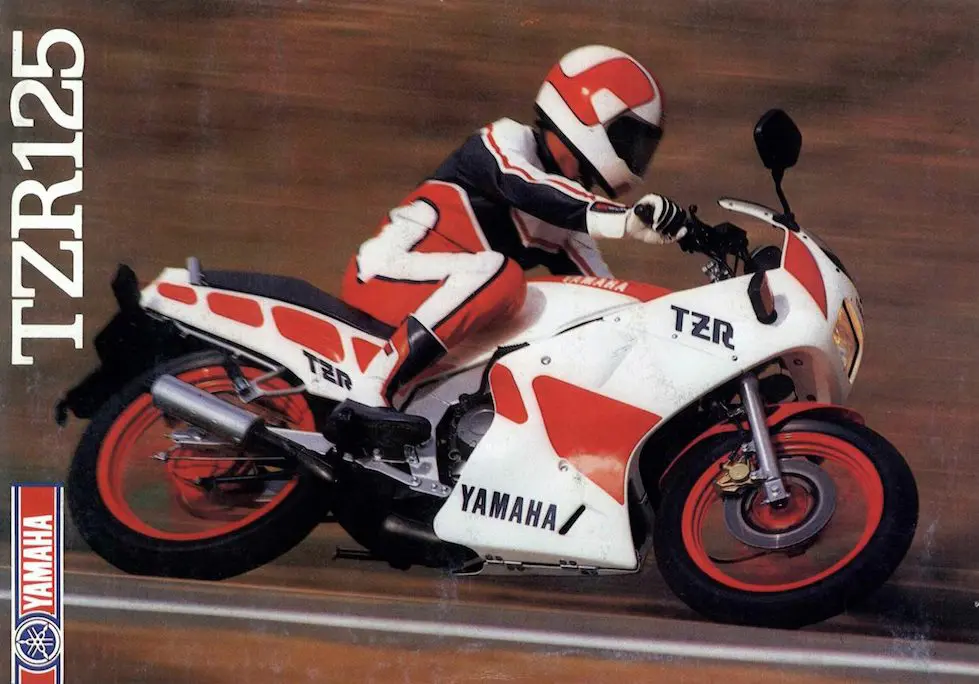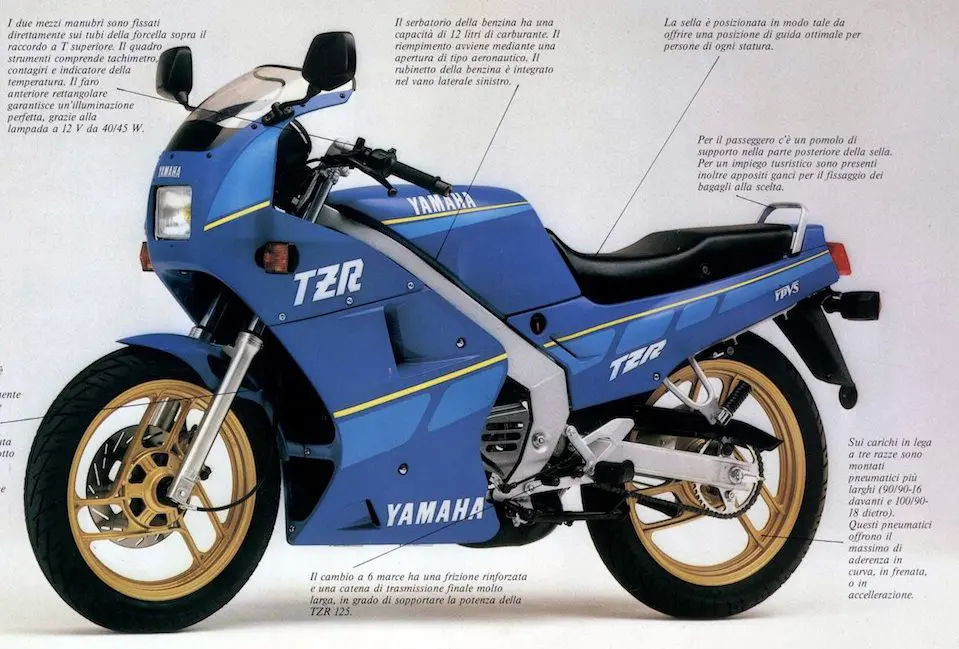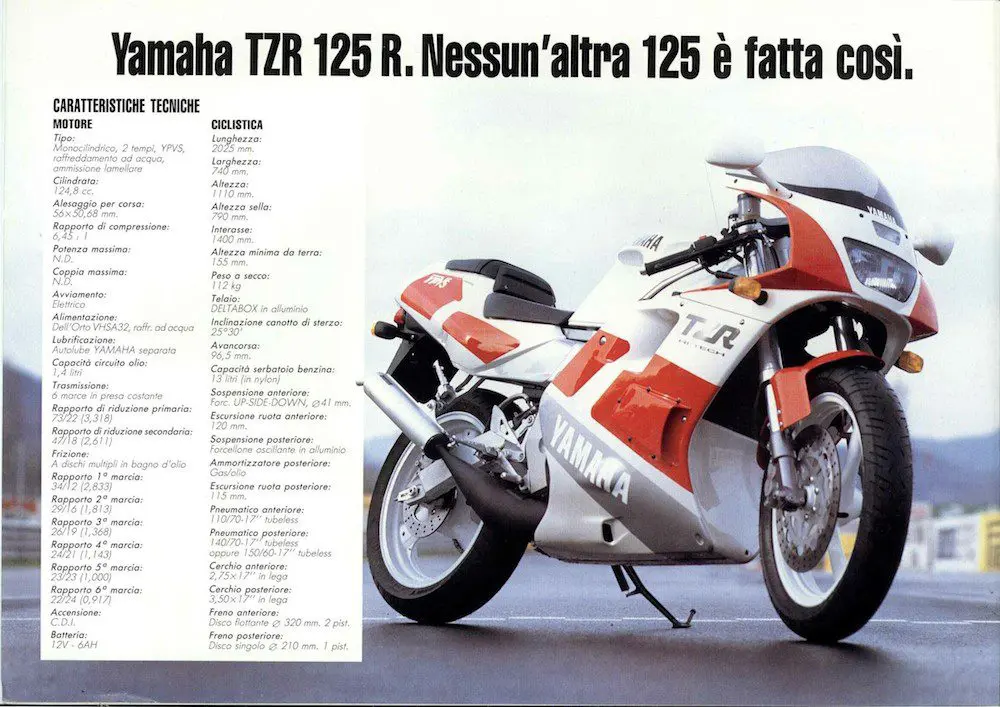Phil O’Hara wanted to make his learner-legal Yamaha stroker go faster. He also wanted to stop it oinking like a pig. The results of his experiments were a revelation…
It was 1990 and I’d sold my car and required transport. These days one car generally replaces another, but this was then, not now. To substitute the metal box that had been transporting me and sundry stuff about, I looked for something that would make me happy. A three year old 1987 TZR125 appeared and was snapped up.

Initially, the bike in its restricted form seemed ideal. It returned 70mpg and showed 85mph on the speedo. Of course, initially is not forever and I quickly tired of barely being able to break the motorway speed limit. It didn’t help that the available power, such as it was, disappeared abruptly at 8000rpm. Breezes, inclines or heavy dinners required copious use of the top three gears to maintain 60mph in order to keep up with traffic flow of the time.
Enjoy more classic motorcycle reading, Click here to subscribe to one of our leading magazines.
The TZR came in two versions: restricted and full power. If the stories were true about how the 24bhp version flew in contrast to the comparatively staid learner variety, then derestriction was a must. As a full licence holder, I investigated ways to break the 12bhp barrier without trashing the bike or destroying my bank balance.
It appeared Yamaha had designed a full power machine and then introduced restrictions that rendered it asthmatic while still retaining an element of excitement. The first thing noticeable was the lack of any mechanism to alter the position of the powervalve. Inspection showed it to be locked closed. Consequently the solution seemed obvious: lock the powervalve open.

I removed the exhaust, along with the powervalve cover and collar, which then allowed me to manually rotate the valve until fully open. The collar was then marked for a new slot so as to secure it accordingly. It was both the cheapest and simplest method. Easy!
Unfortunately it resulted in a bike of the utmost oink! Bicycles out dragged me at traffic lights. At junctions I was at serious risk of being tail-ended by impatient drivers.
Up to about 5000rpm it performed like a moped carrying eleven passengers. Between 5 and 6000rpm there was a slight hole (!) in what was left of the power delivery, after which the bike returned to moped status, albeit with one less passenger, until 8000rpm. However, at 8001rpm all the power was unleashed and the world went funny. Nevertheless, every time I dropped below 8000rpm the bike emitted a very loud OINK!

A more expensive method was to purchase a replacement exhaust that contained a redesigned powervalve collar. When fitted, the power delivery was slightly healthier than the eleven-passenger-moped, but not by much. Better still, there was less of a hole between 5 and 6000rpm and it now became an even drag race between me and the bicycles from traffic lights.
With the first and second options, fun is guaranteed if the engine is kept above 8000rpm. Fortunately the bike handles the resulting speed and additional power quite nicely. Sadly the loud oinking would attract unwanted attention, especially when in town. Forget roll-on performance in the top three gears as it didn’t have any.
The third option was to fit the TZR with the powervalve kit with which it was originally designed to operate. When fitted, the bike is derestricted and capable of full power. No fiddly removal of washers from exhausts or rejetting to worry about.
Forget approaching Yamaha for the kit; I found mine on eBay. It might be possible to still find one these days, but I’d wager that they wouldn’t be cheap. The drawback, had I been in possession of the manual dexterity of an inebriated monkey, was that a variety of tools would be required, along with an afternoon to spare. The promise of a sorted and fully fledged TZR negated any thoughts of there being a downside.

Fitting the kit meant the removal of the seat, tank, right-hand sidepanel and left-hand fairing lower. That said, as the kit was original equipment, the wiring loom had all the requisite connectors from the start. Mind you, it is worth taking note of a few tips should you decide to fit a second hand YPVS kit:
- First, make sure you have spare nuts and bolts handy as they tend to get lost in the transfer of a kit from one TZR to another.
- Next, be sure to route all wires under the frame rail, otherwise the seat will crush them and lead to eventual electrical failure.
- For an easier life, make all the electrical connections before bolting the servo motor to the mounting bracket present on the frame under the tank.
- To preserve your bank balance, adjust the pulley cables so that there is about 1mm of slack in each. Too tight and you will strain and eventually trash the servo, which will cost you lots.
It is well worth gearing the bike to suit the increase in power. In my case I used a front socket with an extra tooth. Flat out, the speedo needle went off the clock and the tacho boasted 10,500rpm. Frankly it was no faster than the bike with the powervalve locked open, but it was more readily attainable and doesn’t attract pig farmers.
Whether I locked the power valve open or fitted a kit, the power dropped off beyond 10,000rpm. Therefore a tooth off the rear sprocket might have helped, with the added benefit that there would be no need for a different length of chain. I found that if you raise the gearing of a TZR with a bodged open powervalve instead of an OEM kit then you will need a pig pen instead of a garage to house the bike.
Fuel consumption for the kitted bike rose to 60mpg, regardless of whether I opted to use the newly acquired power or not. Oddly it would hold an indicated 85mph all day, uphill, down dale, but was not quite so happy at 70mph. I suppose buying a bigger and faster motorcycle would have been the answer, but then it wouldn’t have been a TZR125…
For anyone reading this who doesn’t possess a full licence, bear in mind that quite a lot of policemen either ride motorcycles, or are surprisingly knowledgeable in the field, and the YPVS kit is very obvious. Although modifying the collar is visibly undetectable, the riding style it forces upon you is not. Your riding style, and the loud oinking, will attract seriously unwanted attention.

It is not technically illegal to sell a derestricted bike to a learner that falls outside what that learner may legally ride. On the other hand, it is illegal to do so if you can be reasonably held to know or believe they will use it on a public highway. Unless it is obviously a ratty field bike, on SORN, or sold for non-road use or suchlike, you are potentially inviting trouble.
It would be simpler to remove the kit and sell it on after you foolishly part with the TZR. And just like the person you bought the kit from in the first place, you will probably end up leaving some of the required nuts and bolts on the TZR in the process. That is assuming you can bring yourself to sell the mighty tiddler once you’ve experienced the fun that can be realised from 24bhp!
———
Words: Phil O’Hara
Images: RC RChive


